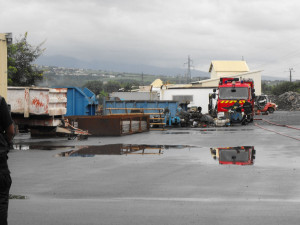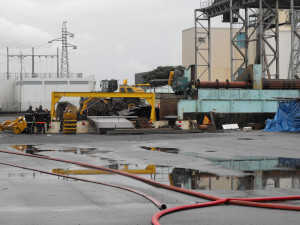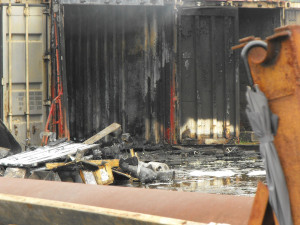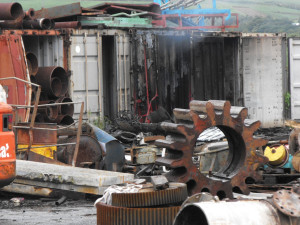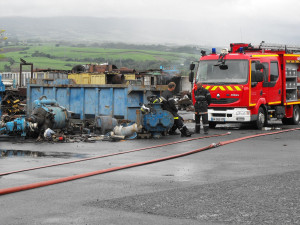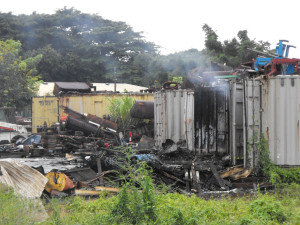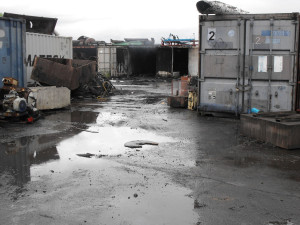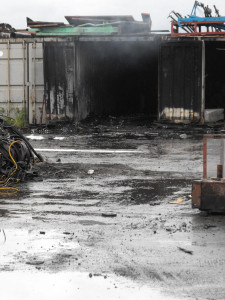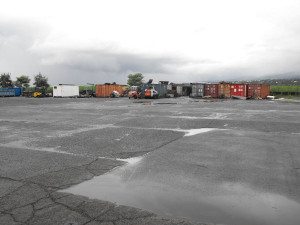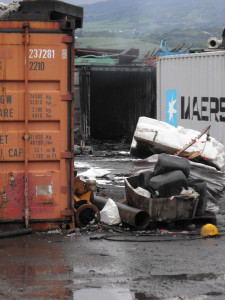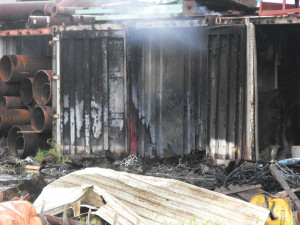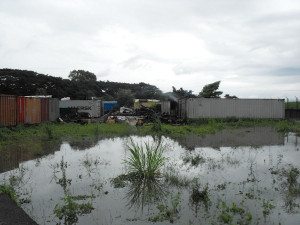In a sugar refinery’s cane fields, fire broke out around 4 am on a 12-m long container with forty 50-litre drums of sodium hydrosulphite, formerly used to whiten sugar. Rubber and metal waste (worn belts, equipment) were stored towards the front of the container while awaiting disposal by a specialist.
The watchman notified the site’s Safety and Environment Manager, who asked that emergency backup be called before informing the refinery director, prompting the director to visit the site. At the scene by 4:30 am, fire-fighters set up a safety perimeter, attacked the burning rubber and wood (pallets and the container floor), and eliminated the smoke plume heading towards the sea. The inspection authorities for classified facilities, alerted at 7:30 am, arrived at the site. Personnel were evacuated and adjacent industries duly warned. Given the dominating wind directions and nearby dwellings, a mobile measurement station was installed by ORA (Regional Air Observatory) upon inspectorate request. The fire fuelled by plastics and wood was brought under control by 2 pm. High CO and H2S concentrations (100 ppm after ventilation) were measured both inside and surrounding the container. In observing that smoke was escaping from 5 barrels, first responders cooled the container, whose temperature had risen to 110°C over its upper part and 70°C in the lower section. Since the accessible hydrosulphite barrels were at 90°C, i.e. above the product decomposition temperature, they were removed and placed under a double sarcophagus in 200-litre jugs filled with sand, with these jugs being stored in 1-m³ bulk vessels also filled with sand. This mitigation step was completed by about 10:30 pm, and the fire department monitoring plan was lifted at 8:30 the next morning.
This fire was caused jointly by heavy rains sweeping across the island and inappropriate storage conditions, i.e. damaged barrels of sodium hydrosulphite reacting violently in contact with water. This extremely exothermic reaction led to the formation of SO2, though the confined vessels (i.e. barrels) and high temperature also induced a strong release of H2S.
On-site waste management policy did not comply with either the Prefectural order or the storage conditions indicated in the product safety sheet, given: a permeable storage zone, no protections in place against foul weather, distinct storage zones for the various wastes not clearly delineated, and lack of an effective sorting protocol. In storage for over 5 years, some of these wastes should have been eliminated well before. The refinery operator was issued a formal notice to dispose of all non-hazardous wastes within a 2-week period and hazardous wastes, for which disposal streams had not yet been well organised, within 3 months. An emergency measure was proposed to: regulate combustible waste storage while awaiting its removal, and prescribe the minimal set of conditions to be respected, i.e. individual protective gear, fire detection and protection resources of sufficient quantity and properly allocated.



